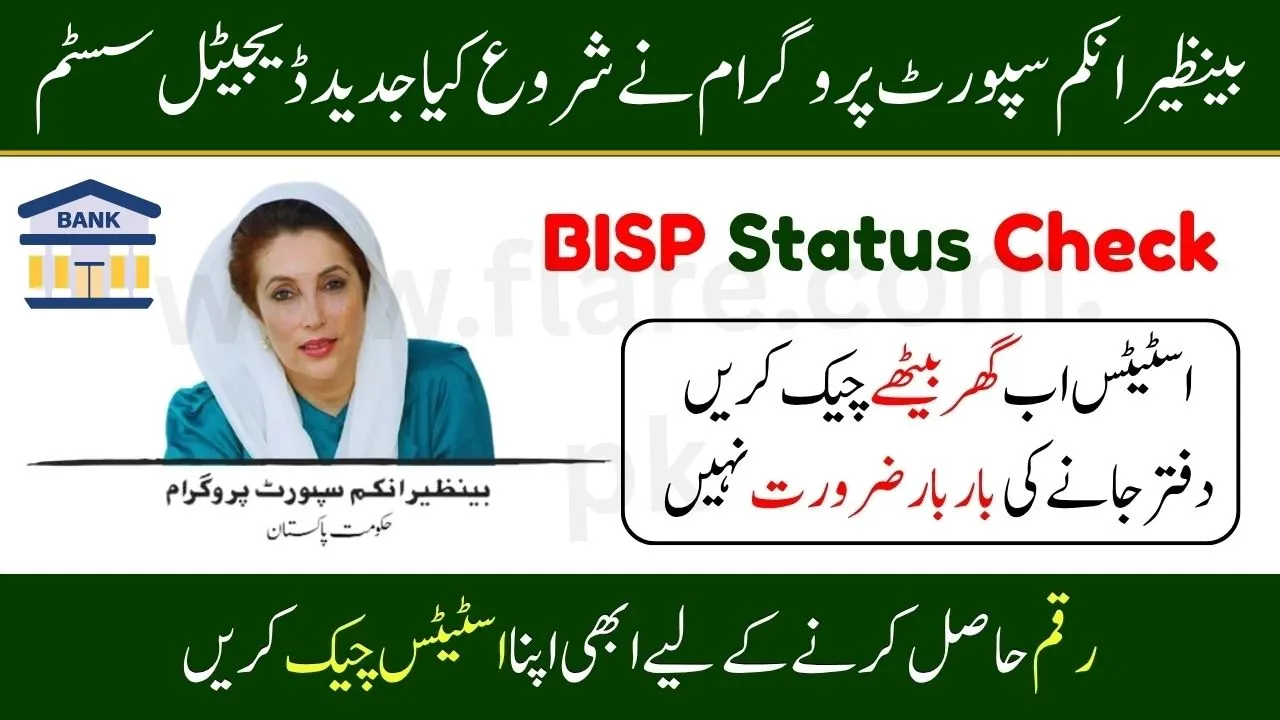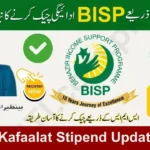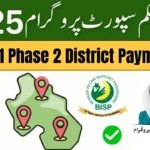The Benazir Income Support Programme (BISP) has officially begun the process of hiring banks for payment disbursement in 2025. This move aims to make cash transfers faster, more transparent, and accessible to millions of beneficiaries across Pakistan.
Under this new system, BISP will partner with multiple commercial and microfinance banks to improve efficiency in delivering financial assistance under the Ehsaas Kafaalat and Benazir Taleemi Wazaif programs.
Why BISP Is Hiring Banks for Disbursement
The decision to bring banks onboard is part of BISP’s plan to modernize payment systems and reduce dependency on manual cash centers. By partnering with banks, the program hopes to ensure that all payments are:
- Delivered securely and on time.
- Accessible through multiple digital channels.
- Linked with beneficiaries’ verified CNICs and bank accounts.
The new system will also promote financial inclusion, encouraging women beneficiaries to use formal banking services for the first time.
Key Objectives of the 2025 Bank Hiring Initiative
The BISP 2025 plan focuses on strengthening Pakistan’s digital payment infrastructure. The main goals include:
- Establishing a transparent payment system with full traceability.
- Allowing beneficiaries to receive funds through banks, ATMs, and mobile wallets.
- Reducing agent-based deductions or unauthorized fees.
- Expanding payment access to remote areas where traditional branches are limited.
Banks Expected to Be Part of the BISP Network
Although the final list will be announced after the bidding process, several banks are expected to participate in BISP’s 2025 payment disbursement program. These may include:
- Habib Bank Limited (HBL)
- United Bank Limited (UBL)
- Bank Alfalah
- National Bank of Pakistan (NBP)
- Mobilink Microfinance Bank (JazzCash)
- Telenor Microfinance Bank (Easypaisa)
These banks already have experience handling digital cash transfers under previous government initiatives and are expected to continue providing payment gateway services.
How the New Banking Model Will Work
The 2025 disbursement model will use a multi-bank network to enhance coverage and convenience.
Here’s how the system will work step by step:
- Beneficiary Verification:
Each eligible family’s CNIC will be verified through NADRA and the BISP database. - Account Setup:
Beneficiaries will be assigned or linked to bank accounts or mobile wallets. - Fund Transfer:
Payments will be directly credited to the beneficiary’s bank or mobile account. - Withdrawal Options:
Beneficiaries can withdraw money through ATMs, branch visits, or agent outlets using biometric verification.
This system aims to replace the older model where payments were handled primarily through limited agents and post offices.
Benefits for BISP Beneficiaries
The shift to bank-based disbursement brings multiple advantages for beneficiaries:
- Faster processing of payments through electronic transfer.
- Secure withdrawals with biometric authentication.
- Reduced waiting time at distribution centers.
- Multiple access points – banks, ATMs, and digital wallets.
- Zero deductions, as funds will go directly to verified accounts.
It also provides a foundation for financial empowerment, as beneficiaries can start saving, transferring funds, or paying bills digitally.
Transparency and Fraud Prevention Measures
The BISP management has emphasized strict measures to prevent misuse or fraud under the new model.
- All payments will be digitally recorded.
- Every transaction will be traceable through CNIC-linked systems.
- Biometric verification will be mandatory for withdrawals.
- Independent auditors and technical teams will monitor the entire process.
These measures will ensure that funds reach the right families without interference or manipulation.
Timeline and Implementation Plan
The bank hiring process began in the third quarter of 2025 and will be completed in multiple stages.
- October 2025: Request for Proposals (RFPs) issued to banks.
- November 2025: Technical and financial evaluations of applicants.
- December 2025: Final selection and MoUs signed with partner banks.
- Early 2026: Nationwide rollout of the new payment disbursement system.
This structured timeline ensures that the transition to bank-based payments happens smoothly before the next major release cycle.
Role of Digital Banking and Women’s Empowerment
One of the most important aspects of this update is women’s financial inclusion. Nearly 90% of BISP beneficiaries are women, and the new banking partnerships will enable them to open and operate personal bank accounts.
This step not only promotes digital literacy but also ensures financial independence and economic empowerment for women across Pakistan’s rural and urban regions.
Future of BISP Payment Disbursement
The 2025 initiative is just the beginning of a larger transformation toward a cashless, transparent welfare system. In the coming years, BISP aims to:
- Introduce smart cards linked with CNICs.
- Expand integration with Easypaisa, JazzCash, and other fintechs.
- Launch mobile app tracking for real-time payment updates.
- Enable cross-bank interoperability for nationwide access.
This vision aligns with Pakistan’s Digital Transformation Strategy and long-term poverty reduction goals.
Conclusion
The BISP hiring of banks for payment disbursement 2025 marks a significant milestone in improving Pakistan’s welfare payment infrastructure. By adopting a multi-bank digital model, the government is ensuring faster, safer, and more transparent fund transfers to millions of deserving families.
This initiative not only strengthens financial accountability but also paves the way for inclusive economic growth through better access to digital banking services.







